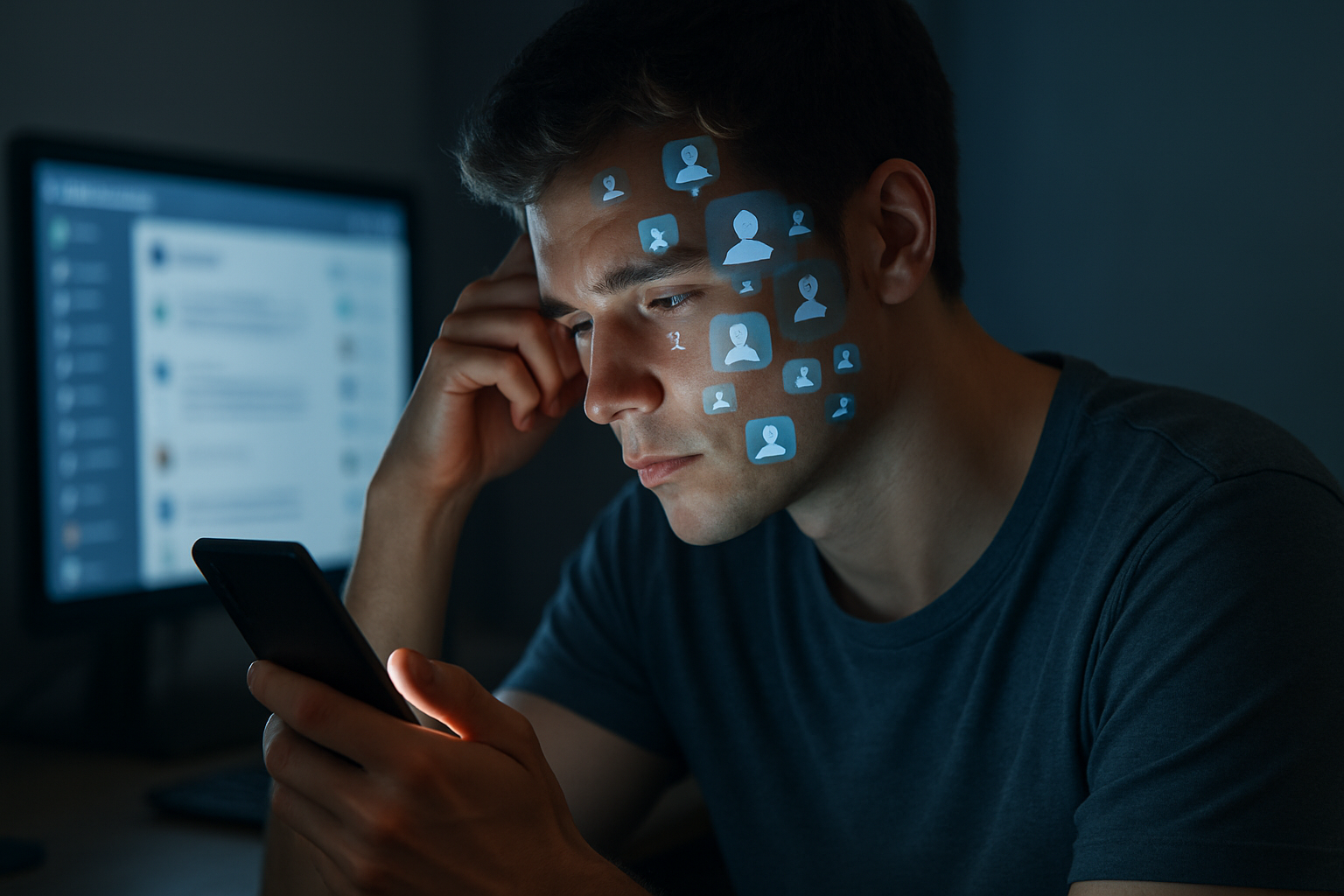Digital Solitude: Finding Meaning in an Age of Constant Connectivity
Silent phone notifications, designated tech-free zones, and scheduled digital absences are becoming increasingly common practices as individuals navigate their relationship with technology. This movement toward deliberate disconnection represents more than just fatigue with social media—it signals a deeper cultural shift in how we perceive genuine human connection and personal fulfillment. As we advance into an era where digital tools increasingly mediate human experience, many are questioning whether constant connectivity actually serves our fundamental social needs. Read below to explore how digital solitude is emerging as a meaningful counterbalance to our hyperconnected world.

The Paradox of Modern Connection
Today’s technological landscape presents a fascinating contradiction: we have never been more connected, yet reports of loneliness and social isolation continue to climb dramatically. Research from the Harvard Graduate School of Education found that 36% of Americans report feeling serious loneliness, with young adults experiencing the highest rates. This phenomenon exists despite—or perhaps because of—unprecedented digital connectivity. The average American now spends approximately 7 hours and 4 minutes looking at screens daily, according to a 2021 report from DataReportal, creating a situation where many are perpetually connected but rarely connecting in ways that satisfy deep relational needs.
The mechanics of this paradox reveal something crucial about human psychology. Our digital communications often lack the neurological rewards of in-person interaction—the oxytocin release that comes with eye contact, the subtle emotional interpretations enabled by body language, and the security that emerges through physical presence. Neuroscientist Matthew Lieberman’s research shows that the brain processes rejection in digital spaces similarly to physical pain, yet without the corresponding comfort mechanisms that in-person relationships typically provide. This neurological disconnect helps explain why increasing our digital connections often fails to address fundamental social needs.
Intentional Disconnection as Social Movement
What began as individual concerns about screen time has evolved into a recognizable social movement with distinctive practices and philosophies. Silent retreats that once appealed primarily to spiritual seekers now attract tech professionals and digital marketers. Device-free social events have gained popularity in metropolitan areas where technological saturation is highest, with some restaurants offering discounts to patrons who surrender their phones upon arrival. Even educational institutions are experimenting with tech-free periods, reporting improvements in student engagement and social cohesion.
Notable figures across various industries have begun advocating for disconnection practices. Computer scientist Cal Newport popularized the concept of “digital minimalism,” arguing for intentional technology use rather than consumption driven by addictive design features. Meanwhile, former tech executives like Tristan Harris have formed organizations like the Center for Humane Technology, directly challenging the attention economy their previous work helped create. These developments signify a maturing movement that has progressed beyond individual coping mechanisms to encompass collective action and institutional criticism.
Redefining Solitude in Digital Contexts
Historical conceptions of solitude have typically involved physical separation from others—a retreat to nature or a sequestered space for contemplation. Digital solitude, however, presents a novel variation on this concept. It involves remaining physically present in society while selectively disengaging from digital channels of communication. This practice creates a unique psychological state where one might be surrounded by people physically while experiencing the mental benefits traditionally associated with solitude.
Psychologists distinguish between solitude and loneliness—the former representing a chosen state conducive to reflection and creativity, the latter an unwanted isolation that causes distress. Research by developmental psychologist Reed Larson found that adolescents who experienced regular periods of solitude demonstrated better emotional regulation and stronger identity development than peers who were constantly engaged socially. Digital solitude extends this framework, suggesting that temporary disconnection from online interaction may provide similar developmental advantages in an era where digital stimulation is constant.
Demographic Variations in Digital Disengagement
Contrary to popular narratives about generational technology habits, research reveals nuanced patterns of digital disengagement across demographic groups. While older generations may disengage due to technological unfamiliarity, younger cohorts increasingly practice deliberate disconnection despite their technical proficiency. A 2022 survey by the Pew Research Center found that 58% of Gen Z respondents reported taking breaks from social media platforms, compared to 40% of Baby Boomers.
Socioeconomic factors also influence digital disengagement patterns. Higher-income individuals increasingly view limited screen time as a status symbol and wellness practice, reminiscent of how leisure time was once considered a luxury of the wealthy during industrialization. Meanwhile, working-class individuals often face structural barriers to disconnection, as many service-sector jobs require constant digital availability. This disparity raises important questions about equitable access to the benefits of digital solitude, especially as research continues to demonstrate its positive effects on mental health and cognitive functioning.
Cultural Implications and Future Trajectories
As digital solitude practices gain prominence, they influence broader cultural attitudes toward technology and social connection. Businesses have begun responding with products and services catering to this shift—from apps ironically designed to limit app usage to resort experiences marketed specifically as “disconnection destinations.” Some cultural critics interpret this commercialization as evidence that true disconnection remains elusive within capitalist frameworks, while others view it as a necessary adaptation to changing consumer priorities.
Looking forward, the trajectory of digital solitude movements will likely be shaped by emerging technologies that blur boundaries between online and offline experiences. As augmented reality technologies advance and the metaverse concept gains traction, questions about the nature of presence and connection will only grow more complex. Rather than representing a temporary backlash against technology, digital solitude practices may instead evolve into sophisticated approaches for maintaining human autonomy within increasingly immersive digital environments. The challenge remains balancing technological innovation with the fundamental human needs for authentic connection and meaningful solitude that have persisted throughout history, regardless of the dominant communication technologies of any era.





